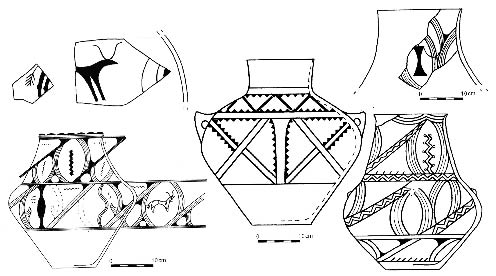
This is a question that arises in conversations with others in academia from time to time. I’ve even pondered it myself, particularly since presenting archaeology in a positive light to the public has always been an interest of mine.
Today, I noticed two articles online that speak to this. I’ll mention the second one first, which is a post at Doug’s Archaeology. Doug writes a quite informative post on this very topic, sharing with us a work first published in 1857 by Rev. John Collingwood Bruce, titled, “The Practical Advantage of Accruing from the Study of Archaeology.” The monograph (I’m not sure of the published context as yet) begins with:
THIS age boasts of being a practical one. Before a scheme is adopted, the question is constantly heard—”What is the use of it ?” Every study, every enterprise, which does not tend more or less directly to increase our wealth, our power, or our personal comforts, is discountenanced. Within certain limits the principle is a good one. Life is too short to spend any part of it in idle speculation.
But Bruce goes on to paint a very relevant picture of how the study of the past can benefit the present or the future with “solid, tangible commercial advantages.” As example, Bruce describes early Roman heating methods (hypocausts) and what benefit such an effort might have provided British commanders during the Crimean War in keeping their soldiers warm when fuel was scarce. Bruce offers other examples and a lengthy discussion on the benefits of studying antiquity and past cultures.
The first article I saw today, which I mention second, is at PLOS One: On the Antiquity of Cancer: Evidence for Metastatic Carcinoma in a Young Man from Ancient Nubia (c. 1200BC). This authors (Binder, et al 2014) describe a human skeleton found in Sudan that dates back to 1200 BCE and exhibits evidence of metastatic cancer -the earliest example known in the archaeological record. This is rather exciting because analyses of DNA in remains such as this can lead to discoveries within the field of genetics about mutations that are involved in the pathology of cancer. To quote Michaela Binder, the lead author:
Very little is known about the antiquity, epidemiology and evolution of cancer in past human populations apart from some textual references and a small number of skeletons with signs of cancer.
Insights gained from archaeological human remains like these can really help us to understand the evolution and history of modern diseases.
The skeleton is of an adult male, age at death was approximately 30 years, and it was interred within a painted wooden coffin along with a amulet of glazed faience.
Along with understanding human pathology, archaeologists are also

able to gain a better understanding of how humans impact the environment, such as with the research into Strombus pugilis, the fighting conch, found in the shallow lagoons of Panama’s Boca del Toro. O’Dea et al (2014) discovered that since prehistoric times, humans have been selecting the largest conchs for food, making it advantageous for the conchs to mature at smaller sizes. Modern fighting conchs of the region contained as much as 66% less meat than their ancestors 7,000 years ago due to long-term subsistence harvesting. Fortunately, these data are being used to promote protected areas to revitalize, protect, and maintain genetic diversity.
My own research into anthropomorphic figurines of the Neolithic in Southwest Asia and Southeastern Europe has yielded some insights into gender and identity that I hadn’t necessarily expected. Perhaps continued research into gender and identity of our prehistoric ancestors can help us navigate the tumultuous seas of misunderstanding and ignorance that modern notions of gender and identity seem to present. If insights into prehistoric notions of gender can soften the hatred or inform the ignorance of a single person’s modern notion of gender, isn’t archaeology worth the effort?
There are good reasons for doing archaeology. Understanding who we are and from whence we came may be vital to understanding who we can become and what we can accomplish.
And isn’t that the very essence of progress?
References:
Binder, Michaela et al (2014). On the Antiquity of Cancer: Evidence for Metastatic Carcinoma in a Young Man from Ancient Nubia (c. 1200BC). PLOS One, 9 (3).
O’Dea, Aaron et al (2014). Evidence of size-selective evolution in the fighting conch from prehistoric subsistence harvesting. Proceedings of the Royal Society B: Biological Sciences. Vol. 281(1782)
Leave a Reply
You must be logged in to post a comment.